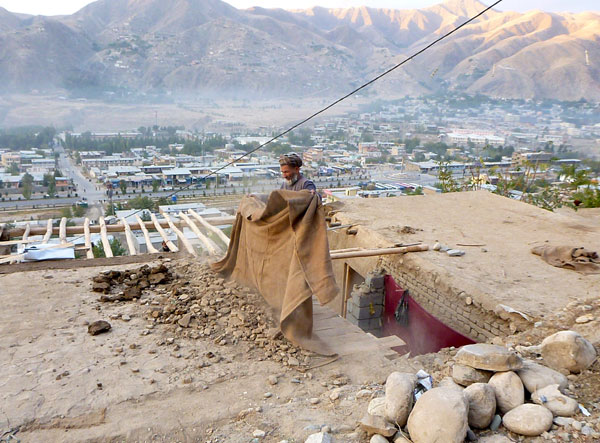7.5-magnitude quake shakes Afghanistan, Pakistan and India
(Agencies) Updated: 2015-10-26 17:40
 |
|
A man clears rubbles from the roof of his house after an earthquake, in Fayzabad capital of Badakhshan province, Afghanistan October 26, 2015.[Photo/Agencies] |
Dr. John Ebel, chairman of the Department of Earth and Environmental Sciences at Boston College in the United States, said the depth of the earthquake meant damage was likely to be spread broadly rather than focused in one disaster zone.
But he said landslides on the unstable slopes of the mountainous region could pose a major problem to rescuers in the coming days.
"Obviously if a landslide comes in to a village, it will take out buildings, but landslides can also take out roads and communications and power systems, so you lose the ability to access remote areas," he said.
The earthquake struck almost exactly six months after Nepal suffered its worst quake on record on April 25. Including the toll from a major aftershock in May, 9,000 people lost their lives there and 900,000 homes were damaged or destroyed there.
The Hindu Kush mountain region is seismically active, with earthquakes the result of the Indian subcontinent driving into and under the Eurasian landmass. Sudden tectonic shifts can cause enormous and destructive releases of energy.
- US forces staying in Afghanistan could be double-edged sword
- 5,500 US troops in Afghanistan beyond 2016 'enough': Pentagon
- Obama slows pace of US troop withdrawal in Afghanistan
- Obama apologizes for US airstrike 'mistake' in Afghanistan
- US transport plane crash kills at least 12 in Afghanistan
- Taliban overrun district in Takhar province of Afghanistan






